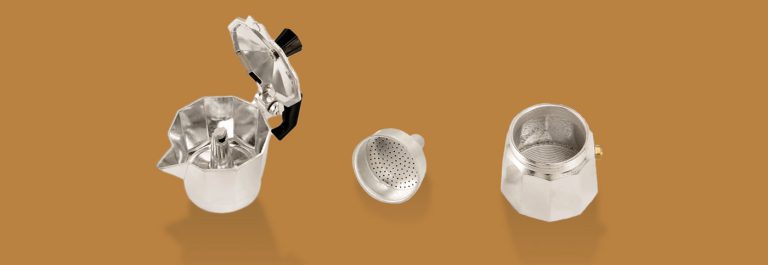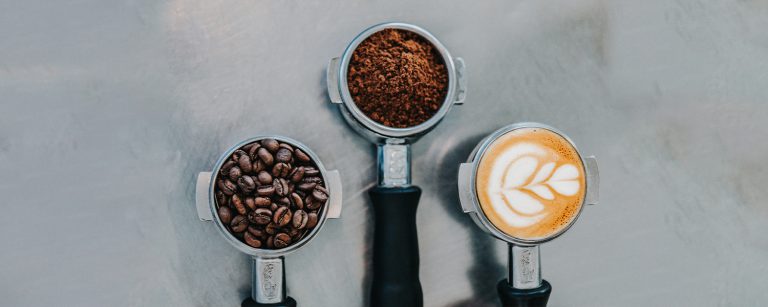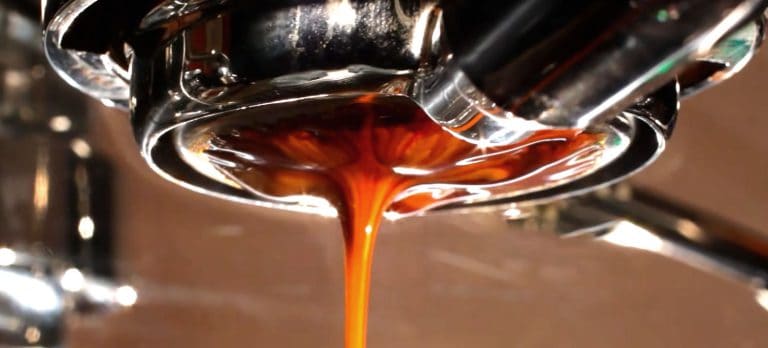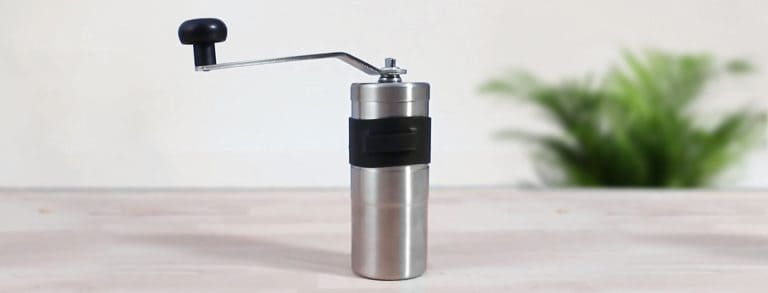Coffee Facts: How People Drink Coffee
Caffeine in our favorite cup of coffee helps us process a lot of things, such as numbers. But coffee itself has its own pool of data that’s really worth dipping into if you’re really passionate about your cup of joe.
Here’s a roundup of coffee facts that you’d want to know about if you really want to get into the nitty-gritty of the coffee industry. You’ll also know if you’re part of the majority when it comes to coffee preferences based on your age, environment, and culture. Let’s get straight to it.
Facts About Coffee Consumption
In a 2018/2019 survey, there are at least 164.4 million bags of coffee (see image for 60kg bag) consumed worldwide. Likewise, the International Coffee Organization (ICO) reported that there are 1.4 billion cups of coffee drank per day around the world.
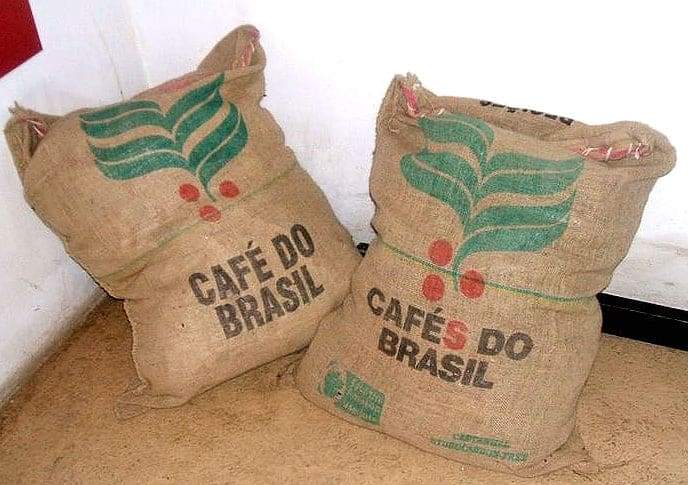
These big production numbers keep increasing based on the number of coffee bags purchased each day, new coffee shops sprouting in different cities, and the constant expansion of the coffee industry amidst the pandemic.
Fun Facts About Coffee
But what makes coffee such a lovable beverage? Aside from the viral Dalgona coffee trend perking up the sales of instant coffee, coffee remains fascinating so here are some interesting coffee facts we hope you’ll enjoy:
- Coffee was discovered in 800 A.D.
- Coffee beans are not beans but seeds.
- Coffee cherries are edible.
- Arabica and Robusta are coffee’s two main types.
- Brazil is a coffee country.
- America grows its own coffee beans in these states: Hawaii and California.
- Espresso is not a coffee bean, but an Italian word for “pressed out.”
- The most luxurious coffee cost $600 per pound.
- Coffee was almost banned five times.
- It takes 30 cups to get a coffee overdose.
- Finland is the home of coffee lovers.
- Coffee is the elixir of life prolongation.
- The largest cup of coffee ever filled is in Guinness World Records.
- The Boston Tea Party helped in promoting coffee in America.
- Decaf coffee does not mean zero caffeine.
- The word “coffee” originated from an Arabic word that means “wine.”
- The average store opening of Starbucks is two stores per day.
- A cup of black coffee is equal to 1 calorie.
- Maxwell House’s Slogan best describes how Teddy Roosevelt loves coffee.
- There are 25,000 ways to order a coffee from Dunkin.
- Coffee grounds are good skin exfoliator.
- 66% of Women love coffee more than 62% of men.
- 75% of Americans take most of their caffeine boost from coffee.
- 79% of Americans prefer DIY coffee.
- 48% of Millennials love gourmet coffee over regular coffee.
- 29% of US coffee consumers feel relaxed when they drink coffee.
- Robusta beans are more caffeinated than Arabica.
- A coffee plant can live up to 1 century.
Have you ever wondered how many people actually drink coffee across the world? Do they brew their own coffee? Do they buy it from the cafe? Here at Big Cup of Coffee, we’ve gathered some interesting coffee statistics about people who just can’t go about their day without a cup of coffee.
Coffee Facts About Caffeine
Caffeine is a strong stimulant innate in the leaves, seeds, and fruit of the coffee plant. It is also the natural insecticide of the coffee plant – the reason why caffeine cannot be removed entirely during the decaffeination process.
A single cup of coffee contains approximately 95 mg of caffeine. Yet, the caffeine that you consume depends on the type of coffee you’ll drink.
- A regular (8 oz) or brewed coffee contains 70 to 140mg of caffeine.
- An espresso shot contains 63mg of caffeine per 1.75oz of water.
- Espresso-based beverages contain 63mg of caffeine in every 8 oz.
- Instant coffee has 30 to 90mg caffeine per cup (8 oz)
- Decaf coffee is not caffeine-free because it still contains 0 to 7 mg of caffeine per cup.
The caffeine content of drinks also varies according to coffee shops that prepare it. For instance, for every 16 fl oz of water, the coffee drinks listed contains the following amount of caffeine (mg):
- 7 Eleven brewed coffee – 280
- Arby’s Jamocha Shake – 12
- Biggby Brewed Coffee – 200
- Biggby Iced Coffee – 192
- Bizzy Cold Brew – 750
- Califia Farms Cold Brew Coffee – 160
- Caribou Brewed Coffee – 305
- Coffee Bean & Tea Leaf Coffee – 333
- McDonald’s (McCafe) Latte – 142
- McDonald’s (McCafe) Mocha – 167
- McDonald’s Coffee – 145
- Panera Bread Coffee – 189
- Peet’s Brewed Coffee – 267
- Starbucks Cold Brew Coffee – 205
- Starbucks Decaf Coffee – 25
- Stumptown Cold Brew + Milk – 319
*See other coffee drinks with caffeine content here.
Although it would take 30 cups of coffee before you experience an overdose, too much coffee in the body can cause withdrawal symptoms. Often, a person with caffeine levels more than their body can handle can experience withdrawal symptoms including decreased mood and cognitive performance when not consumed regularly or in moderation.
Coffee Beans 101
There are three primary types of coffee beans each having a different caffeine content and produced in the most abundance across the world. While it’s easy to get overly complicated, coffee has two main varieties – the more commercialized types, Robusta and Arabica– and the less common coffee bean- Liberica.
In short, the coffee plants have VARIETIES and CULTIVARS. Varieties are not quite different enough from one another to be considered a different species (or subspecies) so they are called varieties.
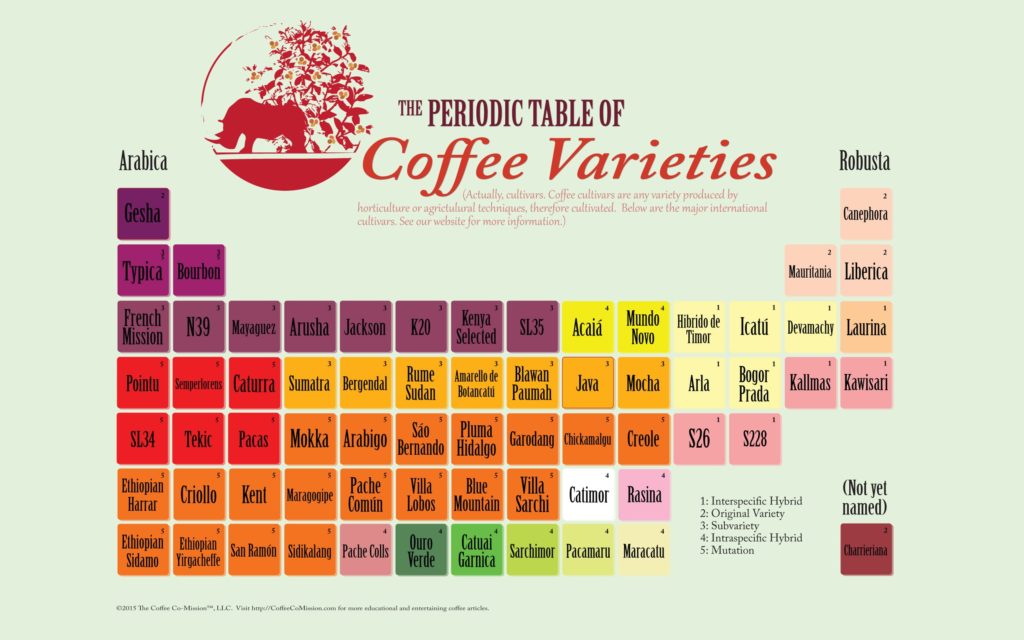
Liberica or Coffea Liberica is a low-yield type of coffee bean cultivated in Southeast Asia. Its taste is similar to Robusta with a bolder, darker, and earthier flavor that can be compared with “liquid tobacco”. Likewise, it gives you an unpleasant feeling with its woody aroma. The coffee plant grows 20m high and yields irregular shape coffee beans bigger than Robusta and Arabica.
Compared to the world’s consumption of Robusta which is 75% and Arabica with 20%, there are only 2% of Liberica coffee drinkers in the world.
Arabica
Coffea Arabica is an Ethiopian-native coffee bean that has very high cup quality but lower yields. It produces coffee beans 2 to 3 years after planting and can live beyond 30 years depending on the environmental conditions and crop husbandry.
The most popular types (or varieties ) of Arabica are the Bourbon and the Typica.
Bourbon
The Bourbon lineage started from Yemen where the seeds are introduced to the Bourbon Islands. It reached the South American continent after 1850 through Campinas, Brazil, and spread from North to Central America.
Bourbon coffee is a high-quality coffee bean with medium yield. It tastes sweet but has low resistance to coffee plant diseases including leaf rust and berry borer. Its coffee cherries can be yellow (Amarelo) or red (Vermello). It has stronger stems and stands more upright than Typica.
Compared to Typica, it has rounder fruit and seed as well as broader leaves.
Its cultivars are Bourbon Pointu/Laurina, SL28, SL34, Tekisic, Villa Sarchi, Pacas, Pacamara, Caturra, Mocha/Mokka and Batian.
Typica
The Typica lineage also called Arabigo or Indio roots back from Yemen to India in the 17th century. The seeds then were taken from India to the Java Islands of Indonesia where the Dutch introduced this type of Arabica coffee beans to the Indo soil.
The Typica plants were brought to European conservatories and further spread across the American continent through trade routes by the 18th century. It’s a tall coffee plant with bronze-tipped young leaves while the fruits and seeds are large. Like Bourbon, it is also susceptible to coffee plant diseases including berry borer and leaf rust.
Its cultivars are Java, Maragogype, and Kent.
Robusta
Coffea Canephora beans, better known as Robusta, are described as “rubbery” or taste like “burnt tires” when roasted. The reason why it tastes darker and bitter is that it contains more caffeine with 2.7% than Arabica which has only 1.5%.
Aside from caffeine content, Robusta is also rich in chlorogenic acid (CGA) with 7 to 10% giving Robusta stronger antioxidant properties than Arabica In its raw form, green Robusta has low sucrose concentration than Arabica. Yet, it has a higher concentration of free asparagine (the limiting factor in the formation of acrylamide in coffee).
Many farmers plant Robusta because it has higher yields and is less problematic in dealing with pests. It has a rounder shape and grows taller than Arabica with a height of 4.5m to 6m. Yet, it is planted in lower densities because of its large size.
Its large leaves are broad and have a pale green color. To pollinate, it needs cross-pollination. It takes 10 to 11 months to mature and is harvested 2 months later than Arabica. And when the plant starts to bear fruits, its cherries are small and borne in large clusters.
Though Robusta has been cross-bred many times, it has two major known types: the upright forms (Erecta) and the spreading forms (Nganda).
Erecta
Erecta is yielded in areas with strong winds. It is perceived as stronger than other Arabica beans but has much productivity. The Erecta coffee plant has slightly bigger leaves and shorter internodes with branches measuring to approximately 25 to 30 degrees. Such an angle is to keep the coffee cherries upright. Likewise, it has long branches that grow vertically upward.
Nganda (Quillou)
Nganda also called Quillou by Dutch farmers grows many stems that form into a big bush. It has a broader leaf and is observed resistant to nematodes (parasitic roundworms in coffee plants i.e. M. incognita and M. arenaria and M. exigua).
Its stem appears copper-colored with silver skin and has bright red fruits. When it comes to yield, coffee farmers prefer planting Quillou because it tastes better than pure Robusta coffee beans.
Coffee Facts: Price Info
The coffee industry in the United States is a billion-dollar business. You won’t see any shortage of coffee drinkers as Americans spent more than $74.2 billion on coffee since 2015. According to the National Coffee Association coffee generates approximately $28 billion in taxes and is responsible for the 1,694,710 coffee-related jobs in the US. Yet, most coffee products are imported from Africa, Asia, and South America.
Likewise, the coffee price varies as it depends on the cost of living in different cities as well as the “coffee’s cultural cachet in the area”. For instance, take a look at the cost per cup of regular coffee Americano in the following cities:
Cost of an “Americano” in the MOST Expensive Cities Around the World
#1 – Doha, Qatar: USD 6.40
#2 – Copenhagen, Denmark: USD 6.24
#3 – Dubai, UAE: USD 5.70
Cost of an “Americano” in the LEAST Expensive Cities Around the World
#75 – Rome, Italy: USD 0.99
#76 – Lisbon, Portugal: USD 0.74
#77 – Lagos, Nigeria: USD 0.62
In the US, there are three places known as the center of coffee lovers due to the number of coffee drinkers and coffee outlets that were charted in these areas. These are Seattle, New York, and San Francisco.
In a 2018 Wallethub Survey, New York City tops the No. 1 spot as the best city for coffee drinkers. The “City that Never Sleeps” has the most coffee shops, cafes, and other coffee-related businesses in the US. For only $3.12, you can now enjoy a cup of coffee in New York City.
But in the most recent Wallethub Survey in 2019, Seattle was able to reclaim its top spot from New York City in the “Best Coffee Cities in America” with San Francisco taking the third spot. Currently, the costs of a cup per coffee in Seattle are as follows:
- Home Coffee: $0.49
- Office Coffee: $0.58
- Starbucks Coffee: $ 3.65
- Independent Coffee Shops: $4.32
- Average cost of a coffee per cup: $2.26
Comparing the cost of coffee in Seattle to the 75 cities in the world. Seattle falls in #50, with 1 as the cheapest while 75 is the most expensive.
Coffee Facts: Daily Consumption by Country
By region
The coffee craze in America is evident with a yearly overall increase in coffee consumption by 5% since 2015. According to the NCDT findings, there are 62% of Americans drink coffee every day – usually having an average of three cups of coffee per day.
The 2014 study also revealed that 96% of Americans get their caffeine boost from coffee. American coffee consumption is estimated to be 45% of the 1.4 billion cups consumed daily around the world. Although the United States is the single biggest consumer of coffee in the world, Finland still holds the no. 1 spot when examined per capita.
According to The Telegraph, there are 20 cities around the world that have the biggest coffee drinkers. If you think the US belongs to the list, well it comes 26th while the United Kingdom is on the 45th. The top 5 countries with the biggest coffee lovers included in the world list areas follows:
Per Capita Coffee Annual Coffee Consumption by Kilogram (2.2 lbs)
#1 – Finland with 12kg per person per year!!!!
#2 – Norway with 9.9
#3 – Iceland with 9
#4 – Denmark with 8.7
#5 – The Netherlands with 8.4
A notable increase in other countries’ daily coffee consumption was observed among the Egyptians with 82.1%, Moroccans with 61.9%, and Serbians with 54.3%, according to the USDA in 2015.
When it comes to Canadian coffee consumption, branded coffee shops have a big impact on Canada coffee consumption with an increased number of Tim Hortons restaurants and Starbucks in the Canadian landscape.
There are about 30% of Canadians who use Tim Horton coffee products at home. Some Canadians are willing to spend between 10 and 19 CAD per month just to buy coffee beverages and products for home use.
Although Sweden placed 6th among the overall biggest coffee drinkers in the world with 8.2kg per person per year, Coffee in Sweden is taken seriously. They practice “Fika” in the workplace. This and other factors impact the increase in the number of espresso drinkers as new coffee chains were opened by small roasters and independent coffee lovers in Sweden.
By Demographic
The percentage of most coffee drinkers in the United States is observable among American adults who earn more than $30,000. Approximately 66% of coffee lovers consume coffee daily compared to 58% of people who earn below the aforementioned annual income.
By Gender
The focus of another study about coffee in Japan is the awareness of young coffee drinkers about the effects of drinking coffee. A 2013 study revealed that 64.8% of females dislike the taste of coffee, while there are 39.4% of males love it. Though both genders are aware that it contains caffeine with 79.9% and 85.6%, few people know that it has other components other than caffeine.
The daily coffee consumption in the US between males and females also revealed a great difference. In a 2019 survey, men tend to drink more cups of coffee per capita than women. Men’s daily consumption is 2.2 cups of coffee while women drink 1.8 cups of coffee per day.
Yet, when it comes to buying coffee from coffee shops, women tend to spend at least $2,327 per year from drinking coffee at coffee restaurants, while men spend only $1,934 per year at their favorite cafes. That’s $6.37 every day!
By Age
According to SurveyMonkey, there are 34% of coffee drinkers who started drinking coffee before they turned 17. While approximately 70% confirmed they enjoyed drinking coffee before they turn 25 years old.
Likewise, between the ages of 18 to 29 years old, there are only 54% of adults drink coffee 2 or more cups on a daily basis. While there are 71% of adults aged between 45 to 60 years and 77% of people older than 60 who take their roast 2 or more cups per day.
As coffee drinking increases with age, the number of American coffee drinkers below 40 has increased coffee consumption by 40% since 2015.
Based on the 2019 NCDT report, the “under 40s” are the driving force for the growing market of cold brew and ready-to-drink coffee beverages. Since this kind of beverage was newly introduced into the market, it has gained over 80% to 89% awareness.
In terms of drinking coffee at any time of the day, the National Coffee Association (NCA) reported that nine out of ten older Americans prefer drinking it in the morning (approximately 1.03 cups) compared to the seven out of ten young adults who prefer it at lunch.
Since the physiological tolerance of the body to coffee increases with age, it’s not surprising that another survey revealed that an average American of 18 to 19 years old drinks a cup of coffee per day, while 70-year-old Americans drink at least 3 cups of coffee a day.
When it comes to steady consumption, data shows that 63% of American adults drink coffee every day since 2018.
Coffee Facts: Portion Size
RTD or ready-to-drink coffee is becoming a trend for most coffee drinkers. Since 2016 18.3% of Americans buy RTDs for the reason of finding other “varieties of health-enhancing additives and benefits” that can be found in coffee. In 2018, it reached an awareness of 22.2%.
What Style of Coffee Do People Prefer?
With milk
Between 2017 and 2018, the most ordered specialty coffee is the traditional latte. During that time frame, American coffee lovers have drank over 67 million lattes. The sales for every cup of specialty coffee increase by 20% every year. Such sales accounted for 8% of the 18 billion dollar coffee market in the US.
Sugar
Adding caloric value to the coffee they drink, 67% of Americans add sugars, creamers, sweeteners, or half and a half to their coffee despite its low nutrient density. When these are added, the caloric value of 1 coffee increases to about 70 calories. These calories come from fat and sugar added.
Cream
There are 65% of Americans who prefer sweetening their coffee by adding cream. The love for creamers by Americans is evident in the Simmons National Consumer Survey and the US. Census data of 2019. Based on the statistics calculated by Statista, there are 176.32 million Americans who drink their coffee with creamer in 2019.
From the projected statistics from 2016 to 2019. The number of Americans who add cream to their coffee is expected to increase to 185.43 million by 2023.
Espresso
Espresso-based beverages are what 15% of espresso drinkers in Northeast prefer compared to coffee drinkers in the Midwest. It is very popular with 25 to 39 years old where 50% of American coffee drinkers are flocking over cappuccinos, lattes and flat whites.
22% of Millenials get their caffeine boost from espresso-based beverages while the other 36% of millennials much prefer cappuccinos, lattes, and other specialty drinks.
Although 60% of coffee served in America is mostly “gourmet” coffee (roasted/brewed using premium beans), midwesterners still prefer decaffeinated coffee. Likewise, the popularity of traditional coffee consumption has declined by 10% despite the number of consumers over age 60 being double the number of coffee drinkers between 18 to 24 years old.
Motivation for Drinking Coffee
Some may find coffee not so palatable. Surprisingly, only 42.9% of Americans love the taste of coffee. A 2019 study found that 42% of young adult Americans will consume coffee as long as it is organic.
As a matter of fact, 53% of American coffee consumers will buy coffee from roasters that are certified environment-friendly and are doing fair trade with coffee farmers and the communities.
The other 29% of US coffee consumers buy and drink coffee because it helps them to relax and unwind.
Cultural Differences
There are some cultural differences among coffee drinkers. Most Hispanic-Americans will buy espresso-based beverages, while Asian-Americans will opt for sweeter, milkier lattes.
On the other hand, African-American have shown great interest in gourmet coffee as past-day consumption has drastically soared from 33% to 40% between 2018 and 2019.
Where are People Drinking Coffee?
Home
The rising interest to create gourmet coffee beverages at home is one of the contributing factors as to why the popularity of single-brewed coffee and espresso machines has spiked with a nearly 50% increase in the last 5 years. Retail units of espresso machines are expected to rise by 18%, while pod coffee machines will remain flat.
Rather than buy coffee outside, 24% of American coffee drinkers will opt to prepare their own coffee at home with their drip coffee maker and other types of coffee machines.
Yet, a decline in in-home coffee preparation was observed since 2012- down from 84% of daily drinkers charted. At present, only 78% of coffee drinkers prepare coffee at home.
In a 2019 survey, it further revealed that 29% of Americans drink atleast 2 cups of coffee per day while at home.
Office
According to the 2017 ISIC study, there are 67% of office-based workers who drink coffee during a typical workday. The primary reason why they drink coffee is that they like the taste (56%). Other reasons for drinking coffee in the office are:
- It allows them to rest to prepare the coffee (40%)
- They feel more alert (29%)
Some 56% of office-based workers buy coffee on their way to work to help them “wake up”.
Drive-Through
Based on the surveyed coffee consumers through drive-throughs, apps, and delivery, there are 46% of Americans who buy coffee from drive-throughs, which is higher by 2 points from the previous year.
Some 48% of daily coffee drinkers even drop by quick-service restaurants, coffee shops, and drive-throughs to buy coffee. While the other 17% of Americans order coffee through an app.
Coffee-shops
In a 2018 survey, 60% of American coffee consumers visit branded coffee shops at least once a month. These branded coffee shops observed were Starbucks, Dunkin’ Donuts, and Tim Hortons who are the leading brands in the market.
Yet, within the past-day coffee consumption, the percentage of people who drink coffee outside their homes or made by coffee shops has dropped by one point from the last year’s charted percentage of 35%.
The coffee consumption behavior of American coffee consumers for the last 8 years is unprecedented. While 30% of Americans bought coffee from the shop back in 2012, this increased to 40% in 2017, but then declined from 36% in 2018 to 35% in 2019.
Top 10 US Cities with the Most Coffee Shop Patrons
If you’re traveling across the nation, you don’t have to worry about finding a coffee shop. Check out the list of ten cities with the most coffee shop patrons per capita.
- Berkeley, California has 1 coffee shop for every 2,073 people!
- Vancouver, Washington – 1 per every 2,224 people
- San Francisco, California – 1 per every 2,297 people
- Seattle Washington – 1 per every 2,308 people
- Portland, Oregon – 1 per every 2,322 people
- Salt Lake City, Utah – 1 per every 2,387 people
- Minneapolis, Minnesota – 1 per every 2, 427 people
- Pittsburgh, Pennsylvania – 1 per every 2,607 people
- Everett, Washington – 1 per every 2,752 people
- Ann Arbor, Michigan – 1 per every 2,825 people
Which Country Produces the Most Coffee and Why?
According to TradeEconomics.com, 75% of the world’s coffee production is attributed to Arabica coffee beans, while the remaining 25% is the coffee production is Robusta. Brazil is the major exporter of Arabica Coffee and exports 40% of the total global supply. Most of the importer demand for Arabica espresso beans came from the United States.
Meanwhile, Vietnam is the major exporter of Robusta with 15% of the total global supply followed closely by Indonesia. Major importers of Robusta coffee beans are mostly in Europe where espresso blends utilize the less expensive, uniquely flavored beans into fresh, high-quality products.
Brazil as No. 1 Exporter
Brazil owns the market for Arabica coffee beans. Last September 2019, Brazil had the largest price increase by 3% for Arabica coffee beans in a month to an average 98.73 US cents per pound.
But what makes Brazil the world’s largest exporter of coffee by country?
- There are approximately 300,000 coffee farms spread throughout the Brazilian landscape.
- There are no coffee export taxes in Brazil.
- There is high competition within the Brazilian government to ensure low costs in coffee production and economic scalability.
- Likewise, the dynamics of coffee production in Brazil impact significant shifts in the spatial distribution of micro-regions that produce specialized coffee.
- Evolution and the variation in the “coffee production systems and species”.
Why Vietnam is Doing so Well
In a 2018/2019 ICO report, Vietnam is described as the biggest exporter of Robusta coffee in the world. Its total shipment has increased by 3.9%, with a total of 24.97 million bags exported this year.
Although Vietnam is relatively new to the international coffee trade, it has managed to gain ground as the largest Robusta producer in the world through the following reasons:
- Vietnamese coffee farmers focused primarily on less-expensive robusta coffee beans.
- The Vietnamese government assisted the coffee farmers by stabilizing the coffee areas at a maximum level of 600,000ha. The main coffee provinces are situated in the Central Highlands. Other small coffee-producing provinces are located at the North-Western mountain, North-Western, and South-Eastern regions of Vietnam.
- Vietnam has favorable climate conditions and low-cost coffee production.
- Practices bumper crop production, where Robusta coffee beans and Arabica beans are yielded in separate coffee farms where it will be productive.
- Check out our blurb about Vietnamese Coffee.
Conclusion
Coffee not only fuels the body but also the countries and businesses that are related to it. Its popularity is not isolated in the United States alone, as more nations are improving their coffee production and practices to meet the world’s demand.
As the demand for coffee increases, everyday coffee consumption also increases by age, gender, and ethnicity. It’s no wonder that more and more coffee-related products are introduced in the market but with the intention to provide an alternative to health benefits a coffee lover can gain.
From the coffee facts we’ve shared with you, what facts did you find interesting? Do you think Vietnam can surpass Brazil as the no. 1 coffee exporter? Share with us your thoughts in the comments below!


